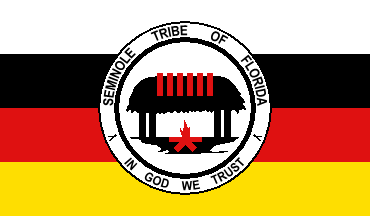Violence and Governmental Coercion in the Seminole Wars
The Seminole are a Native American people who inhabited Florida during the 18th century, comprising a diverse mix of many different groups who settled in Florida during Spanish colonization. A group of Creek Native Americans called the Muscogee arrived in Florida from Georgia and Florida. The Seminole also integrated various different groups of people who were African and Native American runaway slaves. They settled in the wetlands of Florida where fish and wild berries could be found. For the corn harvest, the Seminole have a ceremony known as the Green Corn Dance which is meant to give thanks for their food and commemorate the annual agricultural cycle. This ceremony was a time for different clans of the Seminole to gather, celebrate, dance, and settle disputes. The Seminole wore bright and colorful patchwork clothing and occasionally wore silver jewelry.
The Seminole lived relatively peacefully until 1817 when Andrew Jackson, the 7th president of the United States, invaded the Seminole. The United States and Seminole at that point had been on difficult terms with each other since the American Revolution. This was because many slaves during the war escaped to Seminole territory. Many slave owners despised the Seminoles and accused them of harboring runaway slaves known as the Black Seminoles. Slave owners put pressure on the United States government, which resulted in expeditions led by Andrew Jackson against the Seminole. However, Florida was controlled by Spain, a major colonial player in the Americas. Florida was soon ceded to the United States by the Adams-Onis treaty in 1819. Soon after the annexation, the Seminole signed a treaty that pushed them onto a reservation in central Florida.
Soon, the United States government wanted to push the Seminole out of Florida entirely. They told the Seminole chiefs that they would be able to tour new land west of the Mississippi in which their relatives, the Creek tribe, were located. A treaty was signed between the United States government and the Seminole chiefs, in which the chiefs agreed to move west. However, when the chiefs returned home, they renounced the treaty claiming that they had been coerced into signing it. The conflict over this treaty significantly worsened relations between the two parties. Violence between the Seminoles and American colonists increased and both periodically raided each other's territory.
Soon after, the Seminoles would ambush a group of American soldiers killing all but three in the Dade Massacre. The Seminole would also attack plantations, gathering many freed slaves to assist in their cause. A series of campaigns against the Seminoles followed. However, the Seminoles were able to use the rough terrain of Florida, as well guerilla warfare, to their advantage, and the American army frequently ran out of supplies.
After losing many forts and plantations to the Seminole, the American army changed their strategy. Instead, under the command of General Jesup, the American army would focus on trying to wear the Seminole down over time instead of trying to face them directly. Because of this, many Seminole began to surrender. Under the guise of negotiating a truce, much of the Seminole leadership was instead captured and arrested by Jesup. Despite this, many Seminole continued fighting. However, eventually the war died down, and many of the Seminole remaining in southern Florida were allowed to stay on informal plantations.
